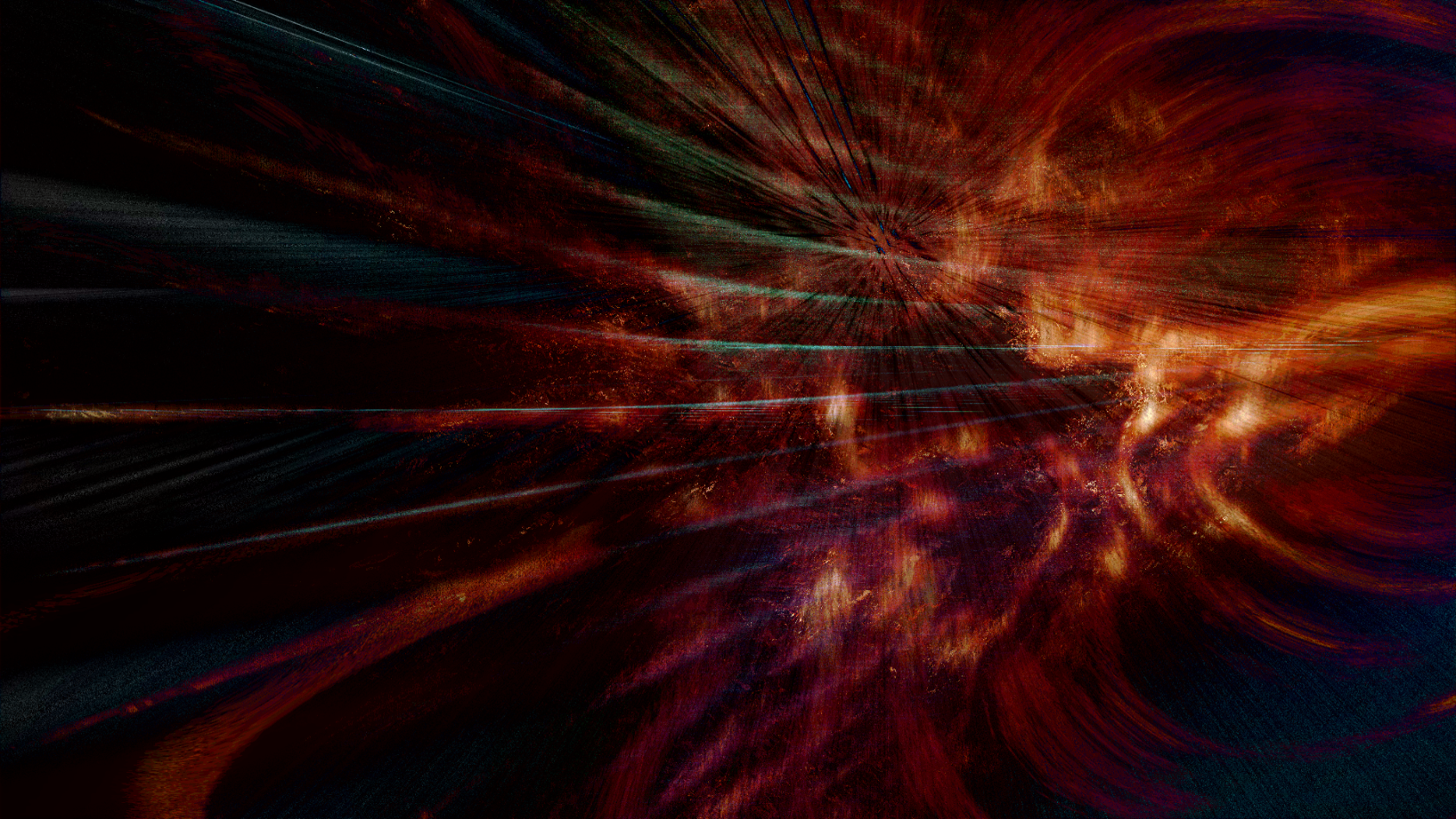![]()
![]()
![]()
Heliocene, Natalia Stuyk



Space: IE University (IE Tower, P.º de la Castellana 259, 28029 Madrid)
Dates: 8 April – 31 May, 2024. Access with guided tour only, schedule coming soon.
Artist: Natalia Stuyk
Heliocene is a new way of interpreting space weather: a vibrant audiovisual expression of the visible and invisible phenomena of the sun. Translucent textures glide over a set of interwoven ribbons, in a state of constant flux, while emitting polyphonic sounds vaguely reminiscent of nature on Earth. The viewer can rotate around the window; their sole purpose is to experience.
The viewer's point of view is one that does not exist in our universe: a panoramic, all-knowing, all-encompassing view, in which scale and distance are not taken into account. Each of the Sun's phenomena inhabits this new microcosm of space weather, represented by reimagined abstract elements whose colour, shape and texture fluctuate in unison with the changing data. This bubble of solar elements will express scientific behaviours and interactions, but applied to a sublime audio-visual representation of the complex systems that make up the heliosphere.
Real-time data, once perceived as lifeless and impersonal, a constant stream of numbers, takes on a new life. The solar wind, made up of charged protons and electrons, imperceptible to the naked eye and travelling at more than 1,000 times the speed of sound, becomes comparatively slow and magnified, emitting a warm electric hum. The fiery, unpredictable sunspots break away from the Sun's surface and their magnetic field lines become visible, allowing viewers to observe the hidden build-up of solar flares, filling the screen with white flashes of light and sound. The aurora, a celestial apparition created when the solar wind collides with the Earth's protective magnetic field, is illustrated by undulating streaks of colour, accompanied by a celestial choir.
Viewers will witness this vast expanse of data, collected by satellites orbiting the Earth 1.5 million kilometres away, realising our simultaneous insignificance and connection to the universe. The Sun's role in sustaining life on Earth is vital, yet the intricate ways in which its behaviour affects our daily existence are beyond the ability of the human eye to perceive.
Like the weather on Earth, all these elements combine to form recognisable weather conditions that are reflected in the experience. The idea of the project is not pedagogical, but rather visceral: it tries to instinctively communicate to the viewer what these data represent as a whole. Even for viewers with no interest in science, Heliocene can be a meaningful experience, a brief but startling escape from the real world.
Natalia Stuyk is a video artist based in Granada, Spain. Using a combination of 2D and 3D techniques, AI and emerging technologies, she transforms sound, data and abstract concepts into fluid animations that take the form of immersive video works and installations. Inspired by the subtropical south, his works invite the viewer to experience a moment of aesthetic bliss and contemplation, exploring themes such as escapism, emergent behaviours and beauty for beauty's sake. He has collaborated with UEFA, Nike, MAC Cosmetics and Arsenal FC, and has also exhibited his work as an artist internationally. He is currently working on interactive projects and installations, creating multi-sensory experiences that embrace new technologies and move away from traditional digital video.